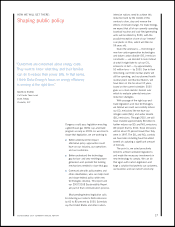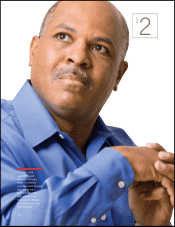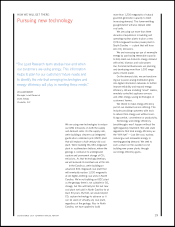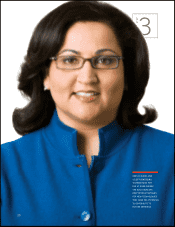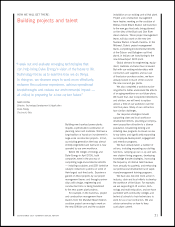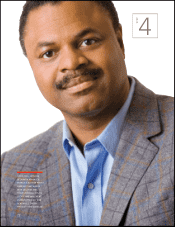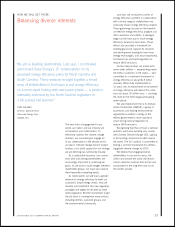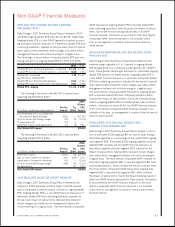Duke Energy 2007 Annual Report Download - page 27
Download and view the complete annual report
Please find page 27 of the 2007 Duke Energy annual report below. You can navigate through the pages in the report by either clicking on the pages listed below, or by using the keyword search tool below to find specific information within the annual report.
DUKE ENERGY 2007 SUMMARY ANNUAL REPORT 25
“I feel that being in wind energy is the best place to
be right now. As the technology has advanced and
our nation’s demand for electricity continues to grow,
renewable energy is a growth opportunity for our
company and supports our strategy to significantly
reduce our carbon emissions.”
HEIDI HENTSCHEL
Director, Finance — Wind Energy
Duke Energy Generation Services
Austin, Texas
People today aren’t used to looking far
into the future or contemplating issues of
the scale and complexity of global climate
change. We focus on the quick fix. We deal
with problems now — then we move on to
the next one. Climate change is different.
The future can only be changed if we begin
today and keep going. Hitting a big target
in 2030 or 2050 may be helpful, but to hit
longer-term objectives, we need to change
the technologies that are vital to a modern
society — including those used to generate
and distribute electricity.
Today’s concentration of CO2 in the
atmosphere is about 380 parts per million
(ppm) — only about 100 ppm more than
in pre-industrial times. If we continue to
use the same technologies, projections
of CO2 concentrations by the end of this
century will top 900 ppm. The earth hasn’t
seen that level of CO2 for about 35 million
years, when things were a lot hotter and
wetter than they are today. Scientists say
we need to take the first steps to lower
our emissions so that future concentrations
don’t exceed 450 to 550 ppm.
Emissions from less-developed
countries will continue to grow as those
societies simply improve their lives. This
increases the urgency to get to work to
develop new non-emitting technologies
and lower their cost so they can also be
built in the developing world.
The task for our generation is to get
the policy right, get started and stick to it.
We need to develop the least costly way
to address climate change and do it right.
That means policies need to be market
based and cover most, if not all, of the
economy. The early years of a cap should
encourage more energy efficiency and
lower-cost actions that can slow, stop
and begin to reverse the growth in CO2
emissions. Policies should encourage the
development and commercialization of
technologies we will need to make the
necessary deep reductions. Policymakers
need to avoid the temptation to demand
immediate deep emissions cuts, which
would result in a greater reliance on natural
gas. We must give clean coal technologies
the time to develop so that we may deploy
them as we retire current technologies.
Future generations will continue this
work. The technologies we develop today
around CO2 capture and storage will serve
as a bridge for the next generation of tech-
nologies. Our grandchildren will need new
energy sources, whether advanced solar,
space-based solar or even nuclear fusion.
We may also find new technologies to
remove CO2 from the atmosphere,
perhaps using a combination of biomass
and carbon capture and storage. There
will be plenty of opportunity for innovation
and adaptation to a warmer world.
We think of this as “cathedral thinking”
— remembering that the architects and
builders of the great cathedrals of Europe
never saw them completed. Frequently
these inspired creations were not finished
until the builders’ grandchildren were
themselves old. Yet that didn’t cause them
to lose faith, nor did it dull their vision of
what might be if they merely began —
despite the work, despite the cost and
despite the fact they’d never see the end
result. Such a commitment is needed for
achieving a low-carbon future.
HOW WE WILL GET THERE:
Taking the long view




